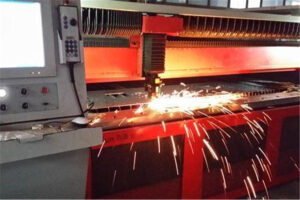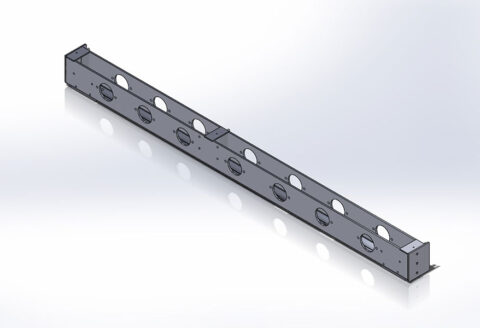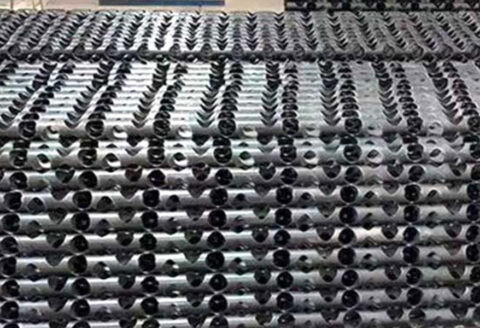Generally speaking, sheet metal processing is a comprehensive cold working process such as shearing, punching, cutting, compounding, folding, welding, riveting, splicing, and forming of sheet metal with a thickness of less than 6mm. Among them, welding is a very important link. Metal welding has some problems that need to be paid attention to before welding, welding and welding standards in sheet metal processing. Let’s summarize:
Requirements for sheet metal parts before welding
- First of all, the raw materials of all sheet metal parts shall not be lower than the drawing requirements, otherwise they cannot be cut and manufactured;
- Secondly, it is required that the surface flatness of the welded section steel does not exceed two thousandths, and the total curvature does not exceed 0.3% of the total length;
In addition, before welding the sheet metal parts, all deformed parts must be straightened and leveled before welding;
Before welding, to choose a suitable welding wire, it is necessary to select welding wires of different thicknesses according to different parameters such as part size, material thickness, and welding seam requirements.
Welding process requirements for sheet metal parts

- First of all, the welding process must be carried out in strict accordance with the drawings, process and process requirements. If the workpiece is welded incorrectly due to a drawing error, it must be welded and cut again, and the workpiece can only be treated as a defect;
- The groove must be processed during welding. If there is no groove or welding profile, the groove should be processed by polishing machine or mechanical processing method according to the situation;
- When welding, the dimensions and geometric tolerances of the workpiece should meet the requirements of the drawings, and the geometric tolerances of the non-machined surfaces shall be implemented in accordance with IT15, without special requirements;
- If you need to substitute materials during welding, it must be approved in writing by the technical department, and the thickness of the plate must meet the requirements of the drawings, otherwise the material cannot be substituted;
- The weld size must be strictly in accordance with the requirements of the drawings. Intermittent welding cannot be used for continuous welding and vice versa. If the size and length of intermittent welding are not clearly required on the drawing, the welding interval of 8 ~ 10mm should be 50mm, and the distance of each welding point must be even;
- The continuous welding seam must be straight and smooth, and there must be no obvious unevenness, and there must be no penetration, welding deviation, welding mark, pore, undercut and other phenomena. The welding angle of the weld is subject to the requirements of the drawings, and the thickness of adjacent parts is to ensure that there is no requirement for the welding angle;
- After welding, each weld should be polished to remove laser cutting china slag and burrs;
- Some parts are not suitable for welding. For example, parts that require bending on the drawings must not be welded without the written consent of the technical department;
- In the welding process of sheet metal parts, the parts that need to be knocked can be gently knocked with a small manual hammer until the size meets the requirements. It is not allowed to hit the sheet metal plane with a hammer, otherwise the workpiece will be damaged and scrapped.
Requirements and standards for post-weld treatment of sheet metal parts
- First of all, the welding seam of the sheet metal parts should be flat and fish-scale, and there should be no stacking convex shells and unevenness;
- Secondly, it is necessary to ensure that the edges of the workpiece are flat and the surface is flat. After welding, it must be polished again with emery cloth to remove laser cutting slag, solder joints and burrs, and keep the welding seam flat and smooth;
- Third, on the plane of the box-type workpiece, the height of the weld should not be higher than the plane height. In principle, the weld seam should be completely covered after applying putty;
- Fourth, for the turnover parts and surfaces that do not need to be processed after welding, strict protection must be carried out during welding to avoid arc damage or welding slag damage, and no polishing is allowed on the premise of ensuring that the weld is uniform;
- Fifth, for metal parts that need to be blued and electroplated after welding, they must be sandblasted uniformly after the welding meets the requirements. Strict protection measures should be taken during the overturning process to avoid bumps and scratches, and no polishing treatment is allowed.


